

Why Acupressure Is Becoming a Go-To Therapy for Back and Neck Pain
Executive summary
Back and neck pain are among the world’s most common causes of disability and lost work days. Acupressure — the manual stimulation of specific points on the body (often those used in acupuncture) using fingers, thumbs, Seeds or small magnets — is increasingly popular because it’s low-cost, reusable, low-risk, can be self-applied, and a growing body of randomized trials and systematic reviews shows it can reduce pain and improve function for many people with chronic low-back and neck pain. The mechanistic evidence (endorphin release, spinal gate control, modulation of inflammatory signals and brain pain networks) helps explain clinical effects, and real-world drivers (limited access to physiotherapy, desire to avoid long-term drugs/surgery, and interest in self-care) make acupressure an attractive option for patients and clinicians. That said, trial quality varies, effects are moderate rather than miraculous, and acupressure works best as part of a multi-modal care plan (exercise, ergonomics, education, and medical evaluation when red flags exist).
Source: World Health Organization+2PubMed+2
1. The problem: why we need more options for back and neck pain
Low back pain (LBP) and neck pain are extremely common, costly, and disabling. Global burden analyses found that in 2020 about 619 million people had low back pain and that LBP remains the single leading cause of years lived with disability worldwide. Neck and back problems are a major driver of work absence, healthcare use and long-term disability in many countries. These trends, combined with an aging population, sedentary lifestyles and occupational risk factors, create enormous demand for accessible, effective non-pharmacologic therapies. PubMed+1
Why this matters for therapy choice:
Widespread prevalence means even small, low-cost interventions that work for some people can have large population impact. PubMed
Concerns about side effects of long-term analgesics (NSAIDs, opioids) and limited access to specialist care motivate patients to find safe, self-directed alternatives. The Guardian
2. What is acupressure? (short primer)
Acupressure is a hands-on therapy derived from the same meridian/point system as acupuncture. Instead of inserting needles, the practitioner (or the patient) uses fingers, thumbs, knuckles, or small tools to apply sustained pressure or kneading to specific “acupoints.” Variants include auricular (ear) acupressure, Shiatsu (Japanese finger-pressure bodywork), and reflexology (foot points). It’s used for symptom control (pain, nausea, tension) and for relaxation. Unlike some bodywork therapies, acupressure emphasizes discrete points believed to influence distant structures or physiological systems. (For practical use, many programs teach standardized point sets for low back or neck pain.)
Mechanistically, acupressure is best seen as a neuromodulatory somatic therapy: mechanical stimulation of peripheral tissues triggers neural and biochemical responses that change how pain is processed at spinal and supraspinal levels (details below). Source: Physiopedia
We use seeds and small magnets for treating online.
3. What does the clinical evidence say? (summarized)
3.1 Systematic reviews and meta-analyses
Multiple systematic reviews and meta-analyses have examined acupressure (and closely related techniques like auricular acupressure) for low back and neck pain. Recent summaries conclude that acupressure shows benefit over no treatment or sham for low-back pain, and sometimes performs comparably to or better than some active therapies (e.g., massage or physiotherapy) — though the overall evidence certainty has often been downgraded because of small trials, risk of bias, and heterogeneity. One 2021 review concluded acupressure is effective for low back pain but noted GRADE-downgrades (study quality concerns). Larger, higher-quality trials are still needed. PubMed+1
Load-bearing evidence (short list):
Systematic review/meta-analysis finding acupressure effective for low back pain, with evidence quality concerns. PubMed
Randomized trials showing acupuncture/acupressure can outperform therapeutic massage for chronic neck pain in some settings. PMC+1
3.2 Randomized controlled trials (examples)
Chronic neck pain: A randomized trial found acupuncture superior to conventional massage for chronic neck pain, with clinically meaningful improvements in pain and function. While that study used acupuncture needles, similar point-targeting principles underlie acupressure and observationally patients often get similar benefit from pressure techniques applied to the same points. PMC
Low back pain: Several RCTs and pragmatic trials report reductions in pain intensity and disability after course(s) of acupressure or auricular acupressure compared with control treatments or usual care. A pooled analysis across trials suggests a moderate effect size favoring acupressure for acute and chronic low-back pain. PubMed+1
3.3 Comparisons to other non-drug therapies
Where trials compare acupressure to massage, physiotherapy or exercise, results are mixed but promising: acupressure sometimes produces similar or slightly better short-term pain relief than massage and can complement exercise-based rehabilitation. Importantly, acupressure can be taught for self-care, increasing its scalability relative to clinic-only therapies. JAMA Network+1
Bottom line on efficacy: evidence is moderate-quality for clinically relevant short-term pain reduction in many patients, but long-term superiority and consistency across diverse patients needs more high-quality trials. PubMed+1
4. How acupressure likely reduces pain — the mechanisms
The clinical effects of acupressure are supported by plausible and measurable biological mechanisms. These are complementary rather than exclusive.
4.1 Neurochemical release (endorphins and monoamines)
Mechanical stimulation of acupoints can trigger release of endogenous opioids (endorphins, enkephalins) and modulate serotonin and noradrenaline pathways involved in descending pain inhibition. Animal and human studies show increased local and systemic levels of β-endorphins following acupuncture/electroacupuncture; similar, though smaller, effects are documented with sustained pressure stimulation. These neurochemical changes reduce nociceptor sensitivity and alter central pain processing. PMC+1
4.2 Gate control and large-fiber stimulation
Tactile pressure activates large-diameter Aβ fibers which can inhibit pain transmission in spinal dorsal horn circuits (“gate control” theory). Sustained pressure or kneading over acupoints may therefore raise the threshold for pain signaling from deeper tissues and reduce perceived intensity. Physiopedia
4.3 Modulation of inflammation and local tissue effects
Some studies show acupressure/acupuncture reduces local inflammatory markers and improves microcirculation in treated tissues, potentially decreasing nociceptor sensitization in muscle and fascia. There is also evidence of reduced muscle tension and improved range of motion after treatment, which can break pain–spasm–pain cycles common in neck/back disorders. PMC
4.4 Brain network changes
Functional neuroimaging of acupuncture points shows changes in pain-related brain regions (insula, anterior cingulate, somatosensory cortices, prefrontal networks). Mechanical acupressure likely engages similar brain circuits, shifting salience and emotional appraisal of pain. This explains why some benefits include improved sleep, mood and coping, not just immediate analgesia. PMC
5. Why acupressure fits current real-world needs (practical drivers)
Several non-biological factors explain the rising popularity of acupressure for back and neck pain:
5.1 Accessibility & cost
Acupressure requires minimal equipment and can be taught in a single session for patients to self-apply at home. For systems with long waits for physiotherapy or for people who can’t attend frequent clinic visits, acupressure offers a scalable self-care option. This is particularly important in regions where physiotherapy resources are scarce. The Guardian
5.2 Safety profile
When performed correctly, acupressure is low-risk — most adverse effects are transient (soreness, mild bruising) and far less severe than long-term NSAID or opioid complications. This favorable safety profile appeals to patients seeking to avoid medication side effects. Clinical reviews explicitly note acupressure’s safety in trials. PubMed
5.3 Patient preference for non-drug options
Growing awareness of opioid risks, and a cultural shift toward nonpharmacologic pain management, boosts demand for hands-on, “natural” remedies. Many patients appreciate an approach they can self-administer that gives them a sense of agency over pain. The Guardian
5.4 Integration into multi-modal care
Acupressure is easy to combine with exercise, posture training, ergonomic changes, and psychological interventions (CBT, mindfulness), creating a comprehensive pain plan that targets multiple mechanisms simultaneously. Trials that combine acupressure with active therapies often report better outcomes than single modalities alone. JAMA Network
6. How acupressure is delivered in practice (protocols & examples)
There are many schools of acupressure; below are common practical approaches used in trials and clinics. (This is informational — check with a clinician for personalized instruction, and seek urgent care if you have red flags.)
6.1 Typical course structure
Initial assessment: history, red-flag screen (neurological deficits, bowel/bladder changes, fever, unexplained weight loss). If any red flags, urgent medical assessment is needed.
Treatment sessions: 6–12 sessions over 2–8 weeks are common in trials, each session 20–45 minutes of practitioner-applied pressure or teaching the patient self-techniques.
Self-care home program: daily 10–20 minute self-acupressure routines targeting standardized points for low back or neck pain (plus stretches/exercises) are usually recommended. PubMed
6.2 Point selection examples (high level)
Low back pain: points along the lower back (e.g., paraspinal points), BL23/BL25 region in TCM terminology, plus distal points such as LI4 and GB30 in some protocols.
Neck pain: local cervical paraspinal points, plus shoulder trigger points and distal points (e.g., LI4, GB21) depending on the tradition.
(If you want step-by-step point maps or a printable home routine, I can provide one — but don’t use it to ignore urgent symptoms; consult a clinician if you have neurologic signs.) Semantic Scholar
7. Limitations, uncertainties and when acupressure might not be appropriate
7.1 Quality and heterogeneity of trials
Many trials are small, use varied protocols, and have risk of bias (blinding is hard, control groups differ), so meta-analyses often downgrade certainty. This means effects seen in pooled analyses may not replicate identically in every clinic. High-quality, adequately powered RCTs with standardized protocols are still needed. PubMed
7.2 Variable response across patients
Not everyone benefits. Factors that predict better response aren’t fully defined, though patients with mechanical or myofascial pain and without serious structural nerve compromise tend to do better. Chronicity, psychosocial factors, and comorbidities influence results and should be addressed in a multimodal plan. PubMed
7.3 Not a replacement for urgent care or red-flag situations
Severe neurologic deficit (progressive weakness, numbness in saddle area), bowel/bladder dysfunction, fever with back pain, or recent major trauma require immediate medical assessment; acupressure is not appropriate until these are worked up. Always screen before starting self-treatment. World Health Organization
8. What clinicians and health systems are doing
A number of clinical settings are adopting acupressure as:
Adjunct care: offered alongside physiotherapy and exercise programs to manage pain flares and improve patient engagement.
Self-management training: short courses that teach patients simple routines to use at home between appointments.
Community clinics and telehealth: brief video instruction for self-acupressure gains traction because it scales cheaply and fits remote care models.
Health policy and guideline uptake is still cautious: major guidelines emphasize exercise and education as first-line care but increasingly recognize manual therapies — including acupressure/acupuncture/massage — as complementary options when used alongside active care. JAMA Network+1
9. Practical advice for patients (evidence-based, pragmatic)
If you have back or neck pain and are considering acupressure:
Get screened first. Ask a clinician to rule out red flags (serious structural or neurologic causes). If none are present, acupressure is a reasonable, low-risk option. World Health Organization
Use it as part of a package. Combine acupressure with active therapies: graded exercise, posture/ergonomics, and pain education for best outcomes. Trials show combination approaches beat single therapies. JAMA Network
Learn proper technique. A qualified practitioner can demonstrate safe point placement and pressure levels. Many studies teach patients simple protocols they can use daily. PubMed
Set realistic expectations. Expect moderate pain reduction and improved function for many people, not guaranteed cure. If pain doesn’t improve after a reasonable trial (e.g., several weeks) or worsens, seek re-evaluation. PubMed
Safety note: avoid aggressive pressure over open wounds, infected skin, or known vascular abnormalities. Stop if you experience severe pain, numbness, or neurological symptoms and contact your clinician. PubMed
But we use seeds and magnets which does not require any pressure to be applied.
10. Research gaps and next steps for science and practice
To cement acupressure’s role in mainstream care we need:
Larger, multicenter randomized controlled trials with standardized acupressure protocols and long-term follow-up.
Better reporting of adverse events and replication of trials across diverse populations.
Mechanistic human studies linking point stimulation parameters (pressure magnitude, duration, frequency) to measurable neurochemical and brain-network changes, which would optimize dose and delivery.
Pragmatic implementation research to test scalable self-management programs and digital training (video/telehealth) in health systems with long physiotherapy waitlists. PubMed+1
11. Short annotated takeaway (quick checklist)
Back and neck pain are extremely common and often disabling; non-drug, low-risk therapies are urgently needed. PubMed
Acupressure reduces pain and improves function in many trials; evidence quality is moderate and improving. PubMed
Mechanisms: endogenous opioids (endorphins), gate control (large-fiber input), inflammation modulation, and brain network effects. PMC+1
Advantages: low cost, scalable self-care, safety, easy integration into multimodal programs. JAMA Network
Limitations: heterogeneity of trials; not a substitute for evaluation of red-flag conditions. PubMed+1
12. If you want more (I can deliver immediately)
I can produce any of the following next (pick one and I’ll create it in this conversation right away — no waiting):
A 2-page printable self-acupressure routine for low back pain (step-by-step points + images and timing).
A patient handout summarizing evidence, safety, and when to see a doctor (clinic-ready).
A detailed literature appendix listing key RCTs and meta-analyses with links and short summaries (useful if you’re writing or citing).
A 6-week progressive home program combining acupressure with exercise and ergonomics.
Tell me which and I’ll generate it now. (If you want the literature appendix, I’ll include the trial details and citations I used above.)
Key sources used (high-value)
WHO fact sheet: Low back pain — scope and public health importance. World Health Organization
Li et al., Clinical Efficacy and Safety of Acupressure on Low Back Pain (systematic review/meta-analysis). PubMed
Irnich et al., randomized trial: acupuncture vs massage for chronic neck pain. PMC
Mechanistic studies on endorphins and electroacupuncture analgesia (Shi et al., 2023; Düzel et al., 2023). PMC+1
Global Burden of Disease and Lancet reporting on low back pain prevalence and disability

Author: Varun Ahuja
Acupressure & Acupuncture Therapist | Dietetic Aide | Pain Management Specialist with over 8 years of clinical experience, I offer non-invasive, drug-free treatments for chronic pain, health issues. My practice integrates personalized acupressure and acupuncture therapies, including advanced techniques like acupuncture, electroacupuncture, cupping, and Sujok therapy, along with diet and lifestyle counseling based on Ayurvedic principles. My mission is to make natural and accessible pain management available to all, reducing dependence on medications. Explore my work and online therapy platform at www.livecure24.com.
Feel free to use images in our website by simply providing a source link to the page they are taken from.
-- LiveCure
Share views on Why Acupressure Is Becoming a Go-To Therapy for Back and Neck Pain
Please keep your views respectful and not include any anchors, promotional content or obscene words in them. Such comments will be definitely removed and your IP be blocked for future purpose.
 19th Dec 2024
19th Dec 2024
 5th May 2025
5th May 2025
 27th Sep 2025
27th Sep 2025
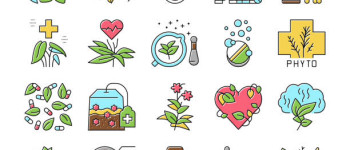 18th Jun 2025
18th Jun 2025
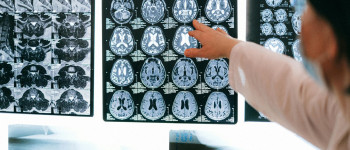 19th Dec 2024
19th Dec 2024
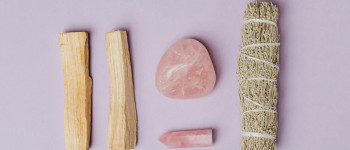 5th May 2025
5th May 2025
 9th Oct 2025
9th Oct 2025
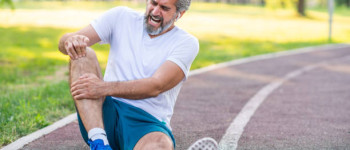 4th Jun 2025
4th Jun 2025
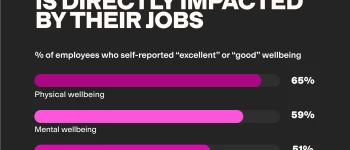 2nd May 2025
2nd May 2025
 9th Dec 2024
9th Dec 2024
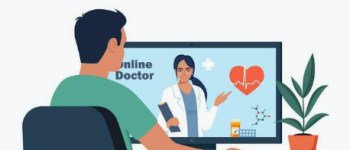 8th Sep 2025
8th Sep 2025
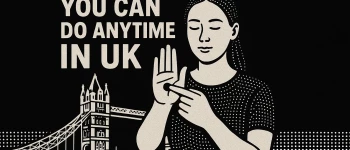 6th Sep 2025
6th Sep 2025
 6th Sep 2025
6th Sep 2025